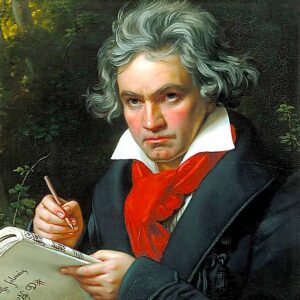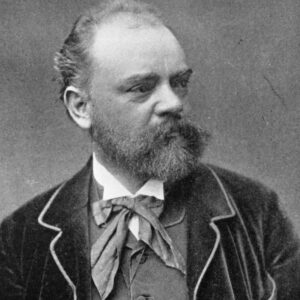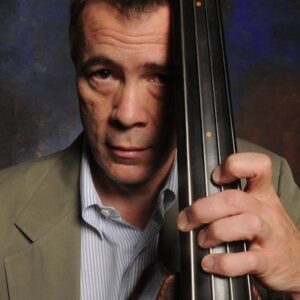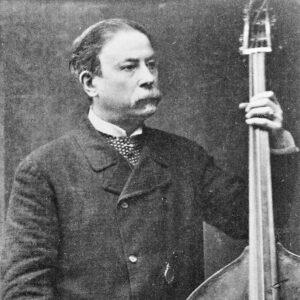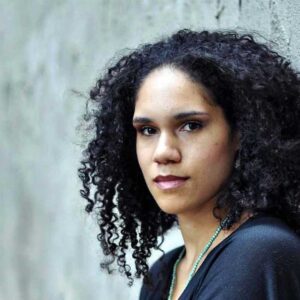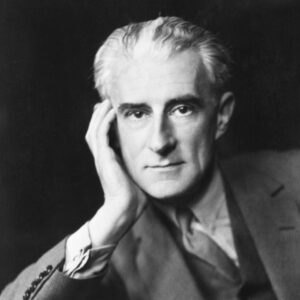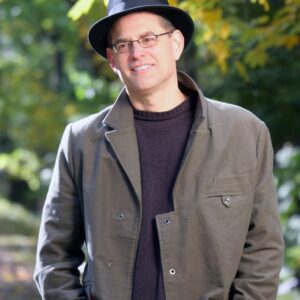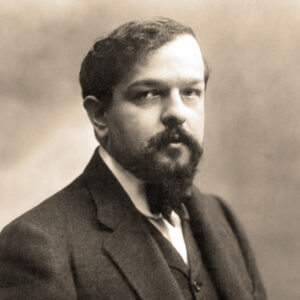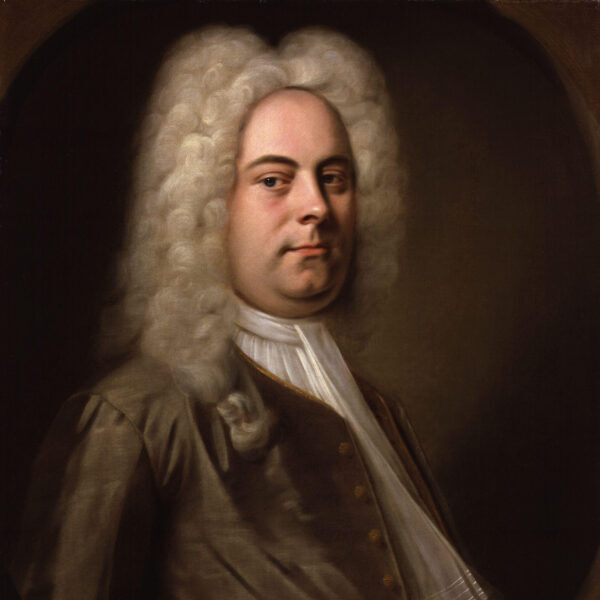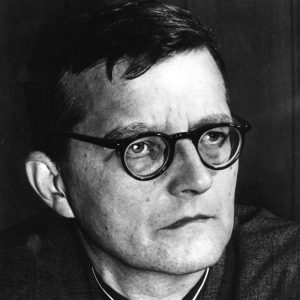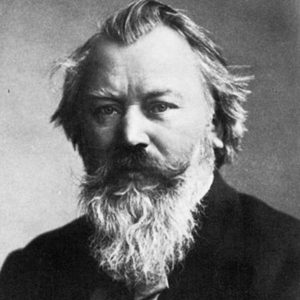Wolfgang Amadeus Mozart
Overture to The Marriage of Figaro (Le nozze di Figaro), K. 492
Wolfgang Amadeus Mozart was born January 27, 1756 in Salzburg. He died on December 5, 1791 in Vienna. His Italian comic opera masterpiece, The Marriage of Figaro, was his first effort after settling in Vienna in 1781. The opera received its first performance at the Burgtheater in Vienna on May 1, 1786 . The “K” number used for Mozart’s works refers to the name Ludwig Ritter von Köchel, who first issued theChronological-Thematic Catalogue of the Complete Works of Wolfgang Amadé Mozart in 1862. The Köchel catalogue has been updated and revised several times. The Overture to The Marriage of Figaro, is scored for flute, 2 oboes, 2 bassoons, 2 horns, 2 trumpets, timpani, and strings.
One of the prevailing myths about Mozart’s opera, The Marriage of Figaro (Le nozze di Figaro) is it was a failure. While it was true that Mozart and his librettist, Lorenzo da Ponte, ran into difficulty with the theater censors and that the first run of the opera only had nine performances, it received the approbation of many Viennese aficionados. Furthermore, it went on to great success in Prague, which at the time was an integral part of the Austrian Empire. Mozart and da Ponte had a model for Figaro in the operatic adaptation by Giovanni Paisiello (libretto probably by Giuseppe Petrosellini) of the first play in Pierre-Augustin Beaumarchais sequence, The Barber of Seville. Paisiello’s Barber was a big hit in Vienna, and Mozart and da Ponte eagerly seized the moment. Not wishing to miss the opportunity, Mozart composed the opera at lightning speed, completing it in roughly six weeks. It has been the judgment of history that Mozart and da Ponte created in Figaro the opera buffa (comic opera) sine qua non.
Given Figaro’s length, it is rather surprising that Mozart gave the opera such a cursory overture. The normal shape for overtures to Italian operas of the day was either a fast-slow-fast sequence (as found in Mozart’s own Abduction from the Seraglio), or a full-blown sonata form movement, replete with a development section in which the thematic material is worked out in considerable detail. The Overture to the Marriage of Figaro, by contrast, is a short example of sonatina form, whereby the formal development section is replaced by a rapid transition back to the home key. While the short duration of the Overture to the Marriage of Figaro gives lie to the length of the entire opera (nearly four hours), its bubbly spirit is entirely fitting to the many madcap episodes of the story.
Wolfgang Amadeus Mozart
Concerto in C Major for Piano and Orchestra, K. 467
The Concerto for Piano in C Major, K. 467 [no. 21], was composed in 1785. It is known bysome as the “Elvira Madigan” Concerto because of its use of the beautiful Andante second movement in the 1967 Swedish film directed by Bo Widerberg. The work is scored for solo piano, flute, 2 oboes, 2 bassoons, 2 horns, 2 trumpets, timpani and strings.
Mozart’s interest in the genre of the piano (or rather, keyboard) concerto began when he was a mere twelve-year old who made arrangements of sonata movements by various composers. While many concertos were being composed in the mid-eighteenth century by an wide variety of German speaking and Italian composers, Mozart may have been most directly influenced by examples by Johann Christian Bach (1735-82), the youngest son of Johann Sebastian and half-brother to Carl Phillip Emanuel, himself the author of several concertos and one of the classic treatises on keyboard technique.
Mozart wrote 28 keyboard concertos throughout his life, in addition to isolated rondos and two concertos for two or three keyboard instruments. Of these, twenty-one of them are original and complete compositions. The fact that fully one-third of these were published during the composer’s lifetime is the surest indicator of the success that these concertos enjoyed. The kind of piano for which Mozart composed is vastly different from the modern piano in many respects. Modern scholars often refer to this instrument as the fortepiano. More flexible in its dynamic range than the harpsichord, the fortepiano had an extremely light and fast action. The frame of the instrument was much smaller and was constructed mostly out of wood. The tone of the fortepiano decayed far more quickly than that of a modern piano. These instruments also were equipped to produce effects that simply do not exist on modern pianos. Achieving the proper balance between solo instrument and orchestra using modern instruments poses special challenges in this repertoire. Mozart’s concertos, however, like all works of transcendent genius, move and thrill audiences regardless of whatever tools are used in their transmission—be they replicas of Johann Walter fortepianos or modern Steinway grands.
This concerto is an excellent specimen of Mozart’s invaluable contribution to the genre. Cast in the traditional three movements, the first movement, Allegro maestoso, begins in the character of a march (another hint that trumpets and timpani would not be out of place). It is followed by the beautiful and soulful Andante, the best known of the movements thanks only in part to its use in “Elvira Madigan.” Its combination of muted violins, pizzicato cellos, and its achingly beautiful melody evoke the most eloquent of Mozart’s operatic arias.The finale is a sprightly Allegro vivace assai in duple meter.
Program Note by David B. Levy © 2017
Dmitri Shostakovich
Symphony no. 10 in E minor, op. 93
Dmitri Dmitriyevich Shostakovich, one of the Soviet Union’s greatest composers, was born in Saint Petersburg on September 12, 1906 and died in Moscow on August 9, 1975. Although he composed in a wide variety of genres, he is best known for his fifteen symphonies, works that stand among the finest examples of the genre from the mid-twentieth century. His TenthSymphony was first performed by the Leningrad Philharmonic (now St. Petersburg) on December 17, 1953. It is scored for 2 flutes (second doubling piccolo), piccolo, 2 oboes, English horn, 2 clarinets, E-flat clarinet (doubling 3rd clarinet), 2 bassoons, contrabassoon (doubling 3rdbassoon), 4 horns, 3 trumpets, 3 trombones, tuba, timpani, percussion (triangle, snare drum, cymbals, bass drum, tam-tam, bells, xylophone), and strings.
A play by David Pownall entitled Master Class depicts Joseph Stalin and Marshall Zhdanov giving a music “lesson” to Prokofiev and Shostakovich, two masters of 20th centurywho, at one point or another, had strayed from the true faith of socialist realism in their music. As the play progresses, all four individuals come to realization that music, especially untexted (i.e., instrumental) music, refuses to conform to any political ideology. History has shown, however, that tyrants and censors never seem to learn this lesson, and composers like Shostakovich who must labor under the yoke of totalitarianism are the ones who have paid the heaviest price. His symphonies (especially Nos. 5 through 15) and chamber music (especially the Eighth String Quartet) bear eloquent witness to his pain.
It was texted music—an opera entitled Lady Macbeth of the Mtsensk District—that got Shostakovich into the deepest hot water. Mercilessly attacked in Pravda in 1936, Shostakovich again incurred the wrath of the Communist Party Central Committee in 1948. Perhaps the Party continued to bear a grudge against the composer for failing to immortalize Chairman Stalin’s leadership in defeating the Nazi fascists with a triumphant and celebratory Ninth Symphony. Instead of invoking the grandeur and glory of Beethoven’s Ninth, Shostakovich produced instead a terse burlesque. For several years thereafter the composer withheld his music from public performance. Only after Stalin’s death in 1953, a slight liberality ensued and Shostakovich’s Tenth Symphony saw the light of a somewhat less gloomy day.
Shostakovich’s personality is etched on this Symphony by means of a Schumannesque device – a musical anagram based on the composer’s name (D[mitri] SCH[ostakovich] that translate into the pitches D, E-flat, C, and B). Shostakovich had used this device twice before—in his Violin Concerto No. 1 and String Quartet No. 5. The quotations in the Tenth Symphony appear in the third and fourth movements, and he used it once again very effectively in his Eighth String Quartet, the Cello Concerto no. 1, and the Fifteenth Symphony.
(1) Moderato. A brooding mood permeates this opening movement. After a winding line in the strings, the clarinet intones a more clearly identifiable melody. Some analysts have noted that this tune bears a striking resemblance to a passage from the contralto solo “Urlicht” movement of Gustav Mahler’s Symphony no. 2 (“Resurrection”). The words from the folkish anthology, Des Knaben Wunderhorn (The Youth’s Magic Horn) that Mahler set translate as follows: “Man lies in direst need! Man lies in the greatest pain!” Shostakovich’s admiration of Mahler is a well-known fact, and if he was, indeed, quoting Mahler, this citation may shed further light on a “program” for his Tenth Symphony, although the composer denied that he had any such intention.
A second subject is brought forth by the flute over a pizzicato accompaniment. Especially memorable is the haunting and subdued end of the movement with its hollow intertwining piccolo solos.
(2) Allegro. The first movement’s melancholy now yields to savage anger. Brass and percussion punctuate a perpetual motion machine that unleashes the previous movement’s potential energy. The music maintains a loud dynamic level throughout. Here we encounter unbridled fury. Some writers have speculated that this movement is a grimly-etched portrait of Stalin.
(3) Allegretto. What begins as a sardonic scherzo becomes a grim warning from the composer, now using the DSCH cipher. Hints of the motto in the flute, and then in the plucked cellos and basses prefigure a poignant signpost in the solo horn. This is answered by a quotation of the melancholy opening phrase from the first movement. The horn call returns, now punctuated by austere responses by the piccolo and flute, tam-tam, and plucked strings. The lighter mood returns, but the tension soon increases. Now four horns, fortissimo, issue another warning. A solo violin, followed by flutes and piccolo, close the movement with final references to the DSCH motto.
(4) Andante-Allegro. The introduction dispels the mood of the third movement with a gloomy gesture that eventually yields to a surprisingly optimistic Allegro. But after so much gloom, can all be right with the world? The spirit of the second movement intrudes, culminating with the DSCH motto bringing the music to a brief halt. The bassoons will have none of it, however, and the merry romp resumes. The motto, uttered now by the horns and timpani, are absorbed into the optimistic spirit of the finale, bringing the symphony to its triumphant close.
Notes by David B. Levy © 2009



